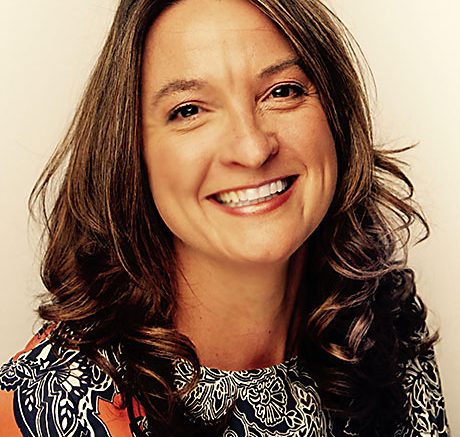How do we reach our potential in connected and autonomous vehicles? What needs to happen to make these vehicles a reality? I believe our workforce is the future of technology. What changes to the workforce must occur?
Recently, I had a chance to attend The Automotive Festival in Michigan. This is one of my favorite events because I go to see where I invest my time as a brand journalist in the coming year. I was blown away by all the smart technologies being developed in the automotive and transportation markets. I wrote 5 Soft Trends that are Disrupting Manufacturing Growth Today based on my previous experience as this event.
This year, I was left with an interesting question as a business futurist and brand journalist. Where are we going to find the talent to make this vision of the future a reality?
How do you build a brighter future?
Since this year’s event was virtual, I knew I needed to set up meetings with people who had a good idea to what the future of leadership looks like. As importantly to me, how do we develop the workforce of tomorrow? Enter Elaina Farnsworth, CEO of The NEXT Education.
Elaina Farnsworth is a thought leader in Autonomy, Cybersecurity, and Smart Cities. In 2018, she was recognized as a Top 10 Influencer for North American Automotive Suppliers. She was a 2017 Rule Breaker Award Winner and in the 2015 Techweek100. She won a host other awards for innovation and was elected to the International Connected Vehicle Trade Association.
Planning for the future workforce
Her current Board of Directors includes organizations such as Intel, Cisco, Autonebula, Green Hills Software, Bosch, IBM, Irdeto, Intertek, Kapsch, Marelli, MEDC, Mobile Video Computing Solutions, Octo Telematics, Oracle, Road America, Transunion, and Verisk Analytics. There are a number of Strategic Partnerships as well. You can find a current list on their website, The NEXT Education.
We sat down like so many other professionals on Zoom to discuss the future of workforce development. What I learned initially I’ll share this week. I plan to share several articles over the coming months on how we get there from here and who’s leading the charge.
This is the future, accelerated by the COVID-19 virus. Many of the programs that were nice to have until recently now are critical to provide support for our aging population. These new programs support major trends including emergency preparedness and transportation. 5G and Smart Cities change how we live and work in our communities including remote work. Finally, how do we build a smarter workforce to support the internet of everything with its associated connectivity and sensors.
What’s needed for faster technology adoption?
What kind of people does it take to make these technologies a reality? Before the COVID-19 pandemic, we were hovering around 0% unemployment, salaries were rising, and many organizations were struggling to meet the demand for technology and engineering talent.
It had many employers wondering, how do we upgrade and upskill our current workforce? Who pays for it? Are our educational organizations prepared to train and develop people with education that lasts weeks and months, not years? The shelf life on new technology training is getting shorter and shorter. It’s going to continue to get shorter as artificial intelligence disrupts markets and industries.
Is the future workforce different?
Elaina shared with me what she sees; many opportunities in education available and requiring leaders to think differently about where they invest their limited resources. This next generation of technology requires both upskilling for your current team and adding additional technology professionals to your teams.
Many of the roles and career paths of the future require new skills for this new world. In Elaina’s words, “The world as we know it has changed. This is a great time for people to take the opportunity to become part of the new world that will emerge.”
Who is the future technology workforce?
What does this mean? Elaina shared an ideal candidate profile from the near future. This person has to have a background in electrical or mechanical engineering, cybersecurity, and some solid programming skills. This person also needs good problem solving skills and higher levels of emotional intelligence to deal with a wide range of stakeholders both inside and out their organizations.
I’ve spent over 30 years in technology. I’ve interviewed, hired, and managed large technology organizations and teams. Less than 5% of these individuals have these diverse skills. The ones that did many times lacked the emotional intelligence to deal with a wide range of stakeholders and conditions.
Elaina Farnsworth is absolutely right. The kind of person who excels in the future needs to have these skills. As importantly, they need to know how to manage teams of people with these skills.
The next generation of leadership
Both Peter Drucker and W. Edwards Deming were both big advocates for knowledge workers. As the future unfolds, we need to learn how to manage a wide range of capabilities and resources. Many of my clients are exploring robotics and artificial intelligence as ways to solve this challenge.
Interestingly, COVID-19 has helped reinvent client relationships for smaller organizations with their technology partners. Managed Service Providers and Value Added Resellers have redefined their relationships with clients as they successfully helped their clients build the infrastructure for future organizations.
Super regional partnerships that provide high value at reasonable cost have become the new normal. Long term relationships have paid off in high value, high margin business for those companies serving the small and middle sized organizations.
What does the future look like?
The question for most is what does the future look like? Can they keep their advantage and continue to provide their services for clients’ needs as they continue to evolve and change? That’s a topic for a different day.
We’ve talked about the changing markets empowered by various technologies and capabilities. Next week, we’ll explore what role training and education have in the future of work. We talk more about Elaina Farnworth’s view of training and how to get to the future in a way that makes sense for everyone.
I know we’ve talked about many things today; I’ll tie it all together next week with the details on how you can develop your next generation organization.
See you next week!




Leave a comment
You must be logged in to post a comment.